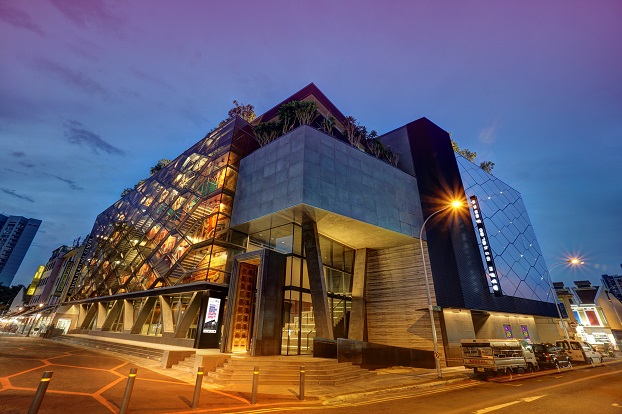
Singapore’s Indian Heritage Centre opened on May 8, 2015. The museum’s jewel box-like façade towers over the historic and colorful shophouses on Campbell Lane and Clive Street in Little India, and traces the history of the South Asian communities of Singapore and Southeast Asia. The $12M, 3,000-square-meter Indian Heritage Centre is the city’s third state-run, race-based heritage center, after the Sun Yat Sen Nanyang Memorial Hall and the Malay Heritage Centre. As someone who is a South Asian American expatriate in Singapore and has been deeply interested in representation and the diaspora, both personally and professionally, I had been curious as to the stories the center would choose to tell.
The center’s permanent collection is housed in five galleries on Levels 3 and 4. “Early Contact: Interactions Between South and Southeast Asia, 1 B.C.E – 19th Century” illustrates thousands of years of trade and cultural relationships between these two regions of Asia, and serves as a preamble to the Singapore experience of Indian migrants.
“Roots and Routes: Origins and Migrations, 19th Century – 21st Century,” “Pioneers: Early Indians in Singapore and Malaya, 19th Century – Mid-20th Century,” and “Social and Political Awakening of Indians in Singapore and Malaya, Mid-20th Century” give visitors a factual, if cursory, introduction to the history of Indian and South Asian communities in Singapore and Southeast Asia. (A much more robust history of these eras can be found in Indians in Singapore, 1819-1945: Diaspora in the Colonial Port City by Rajesh Rai, a comprehensive, multi-layered portrait of the Indian diaspora in pre-independence Singapore.)
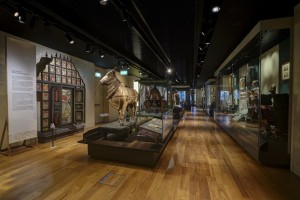 However, of note in these galleries are artifacts gathered via donations and loans from Singapore’s South Asian community, including jewelry, musical instruments, letters, and photographs belonging to prominent pioneering families. This “local” collection is joined by other significant artifacts from Singapore’s National Collection, such as a spectacular mosque façade from Multan, Pakistan, as well as those gifted or loaned by the Government of India, such as four bronze busts of Mahatma Gandhi, Rabindranath Tagore, Subash Chandra Bose, and Jawaharlal Nehru.
However, of note in these galleries are artifacts gathered via donations and loans from Singapore’s South Asian community, including jewelry, musical instruments, letters, and photographs belonging to prominent pioneering families. This “local” collection is joined by other significant artifacts from Singapore’s National Collection, such as a spectacular mosque façade from Multan, Pakistan, as well as those gifted or loaned by the Government of India, such as four bronze busts of Mahatma Gandhi, Rabindranath Tagore, Subash Chandra Bose, and Jawaharlal Nehru.
The final gallery, “Making of the Nation: Contributions of Indians in Singapore, 1950 – 1980″ showcases the contributions of South Asian Singaporeans in creating the modern nation-state. The choice to end this narrative in 1980 and not tell the story of today is an unfortunate one, but an unsurprising one. “Heritage” in Singapore is rarely recognized as active, changing, and evolving.
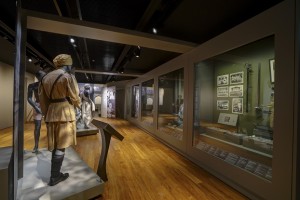 Since the 1990s, according to Brij V. Lal, Peter Reeves, Rajesh Rai in The Encyclopedia of the Indian Diaspora, there has substantial increase in the number of Indian professional migrants arriving in Singapore and a sizeable number of laborers and domestic workers from South Asia. “The arrival of professional migrants, temporary laborers, and domestic workers has made the Indian community more heterogeneous than before [and] new divisions have emerged between the old diaspora, the new diaspora of professional migrants, and the sojourning groups of temporary laborers and domestic workers,” Lal, Reeves, and Rai write. These modern-day stories of the diaspora’s dynamic, ever-changing nature are not represented here.
Since the 1990s, according to Brij V. Lal, Peter Reeves, Rajesh Rai in The Encyclopedia of the Indian Diaspora, there has substantial increase in the number of Indian professional migrants arriving in Singapore and a sizeable number of laborers and domestic workers from South Asia. “The arrival of professional migrants, temporary laborers, and domestic workers has made the Indian community more heterogeneous than before [and] new divisions have emerged between the old diaspora, the new diaspora of professional migrants, and the sojourning groups of temporary laborers and domestic workers,” Lal, Reeves, and Rai write. These modern-day stories of the diaspora’s dynamic, ever-changing nature are not represented here.
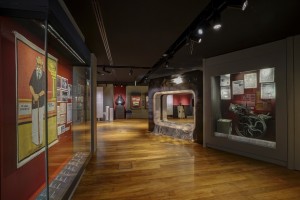 Furthermore, in this gallery, it is made stark how few South Asian women have held positions of power in independent Singapore, outside of the domestic and community (e.g. performing arts) spheres. Not a single South Asian Singaporean woman is represented in the fields of government, law, business, the literary arts, science, or media in a wall mural highlighting prominent Singaporeans.
Furthermore, in this gallery, it is made stark how few South Asian women have held positions of power in independent Singapore, outside of the domestic and community (e.g. performing arts) spheres. Not a single South Asian Singaporean woman is represented in the fields of government, law, business, the literary arts, science, or media in a wall mural highlighting prominent Singaporeans.
Still, the Centre is worth a visit, if one knows little or nothing about the South Asian communities of Singapore and Southeast Asia and one can look past the rather one-dimensional, celebratory treatment of the diaspora. The Indian Heritage Centre is free to the public for the month of May in conjunction with its inaugural “Culture Fest.” The festival will showcase, over the month, the arts and culture of the South Asian Singaporean community through performing arts, workshops, lectures, and film screenings.
* * *
Photos courtesy of Indian Heritage Centre.
Pooja Makhijani writes children’s books, essays, and articles, and also develops educational media and curricula. A version of this post appeared on her blog, notabilia.wordpress.com.

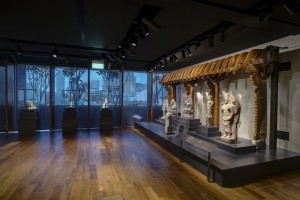












I haven’t been inside the Centre, but I’d like to comment on the building.
I visited Serangoon Road in January 2015 after being away from Singapore for
more than a year. While walking down the back-lanes, I was surprised to see the new Indian Heritage Centre. The massive building was still under construction then, but it is totally not in keeping with Serangoon Road’s streetscape. What is even worse is that existing shophouses were demolished so that this aberration could be built. This new
building does not correspond to the scale of the buildings around it, and is so incongruous, partly due to the abundant use of glass and steel and lack of any traditional styles, that it destroys the harmony of the neighbourhood. I’ve spent many weekends in Serangoon since my childhood and the back-alleys were always where the real action/life could be found. This building completely detracts from that experience…